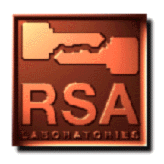

Capstone is the U.S. government's long-term project to develop a set of standards for publicly available cryptography, as authorized by the Computer Security Act of 1987. The primary agencies responsible for Capstone are NIST and the NSA (see Question 146 and Question 148). The plan calls for the elements of Capstone to become official U.S. government standards, in which case both the government itself and all private companies doing business with the government would be required to use Capstone.
There are four major components of Capstone: a bulk data encryption algorithm, a digital signature algorithm, a key exchange protocol, and a hash function. The data encryption algorithm is called Skipjack (see Question 80), but is often referred to as Clipper (see Question 151), which is the encryption chip that includes Skipjack. The digital signature algorithm is DSA (see Question 26) and the hash function is SHA (see Question 100). The key exchange protocol is not published, but is generally considered to be related to Diffie-Hellman (see Question 24).
The Skipjack algorithm and the concept of a Law Enforcement Access Field have been accepted as FIPS 185; DSS has been published as FIPS 186, and finally SHS has been published as FIPS 180.
All the parts of Capstone have 80-bit security: all the keys involved are 80 bits long and other aspects are also designed to withstand anything less than an "80-bit" attack, that is, an effort of 280 operations. A Capstone chip is available that implements all the algorithms.